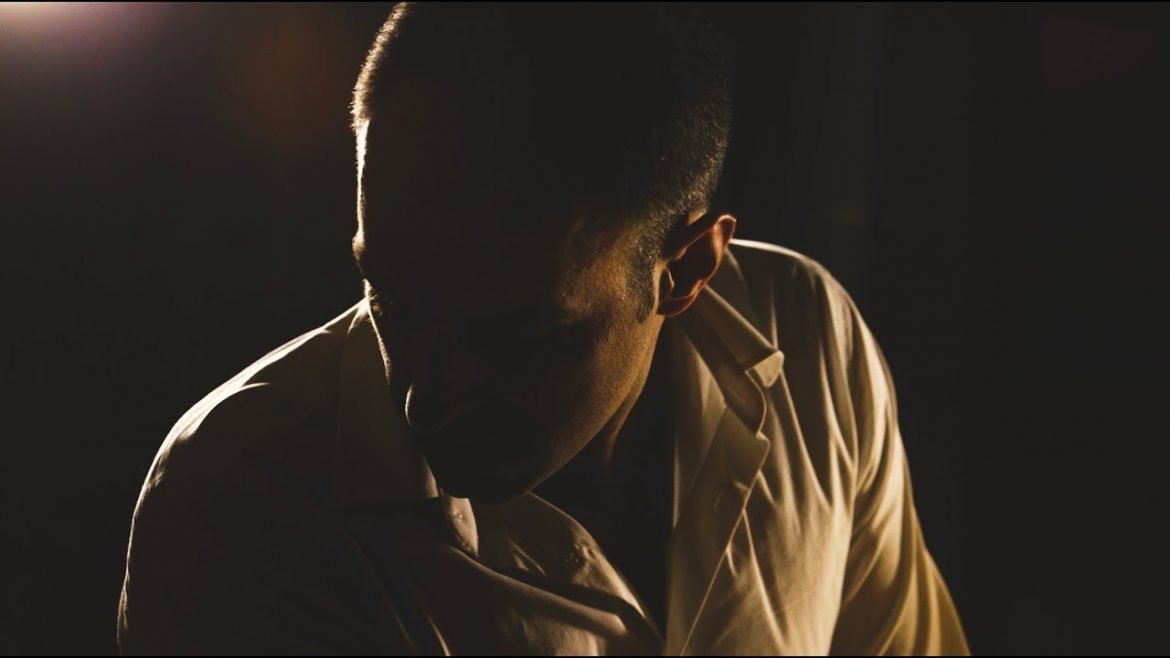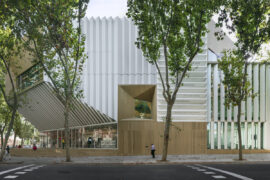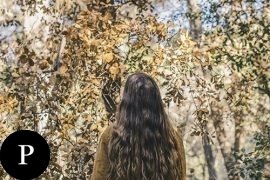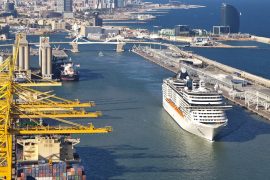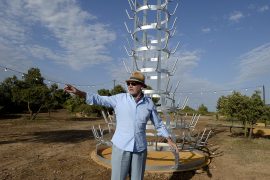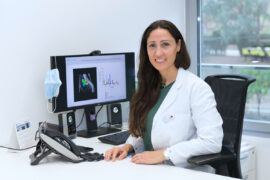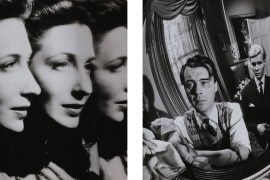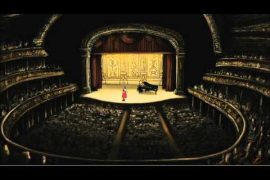[dropcap letter=”T”]
he tribune organ that presides over the Basilica makes possible the connection of the chromatic reality that Gaudí wanted to be seen inside with another kind of vibration -an invisible one- as it is that of spiritual reality. There takes place a remarkable synaesthesia: the confluence of sight and hearing enables an experience which is essentially intangible, an experience that every human being can take advantage of, whatever might be his/her religiosity, personal belief and, of course, provenance. Bruno Zevi wrote that the internal space is the absolute protagonist of the architectural work, even if “it cannot be represented completely in any way, being only apprehended or lived by direct experience”. The alliance of colour and music in the majestic interior of the Sagrada Familia encourages that intimate experience -for some people spiritual- that is offered as a metaphor of one’s interiority.
Juan de la Rubia, official organist of the Sagrada Familia, knows many of the secrets of this expiatory temple which, as such, is financed by the faithful themselves. He explains the details that concern the building and emphasizes the importance that Gaudí gave to music. Especially the music that could be performed by human voice. Music of maximum relevance due to the spiritual power of words, which are accompanied by a specific colour and, therefore, a sensitive significance, added to the properly linguistic one; hence the numerous stands, built ex profeso for a choir seldom heard, by its dimensions. But he also remembers the importance of the music played by the organ, the so-called “king of instruments”, to which Gaudí thought of endowing an unprecedented potency in one of his most inspired projects, still to be carried out: he intended to place the instrument at a height near the ceiling and, through the placement of various sound sources, create a sound that would be as enveloping as possible.
The organ is considered, amongst all instruments, the most technically qualified to perform the alchemy of that synaesthesia, and give voice to diverse discourses of great complexity. It can display melodies in counterpoint, thanks to its multiple keyboards, and it also approaches the timbral nuances of a symphony orchestra, thanks to its multiplicity of registers. Throughout the hundreds of pipes an infinite range of acoustic possibilities is perpetuated, that the interpreter’s creativity has at his/her disposal. The organ manages to develop over time a type of experience that seems to transcend the temporality itself -being, in fact, anchored in physical reality and taking advantage of the fluctuation of time with mathematical precision. If one had to think about a composer who managed to verbalize that spiritual experience, that would be Johann Sebastian Bach.
Despite its reduced portability, the organ is the most complex and versatile music-making machine. It invites the listener to discover the invisible movement of immaterial reality, decanting affections between the Sagrada Familia’s walls of light. One just needs to close the eyes to see the colours. Allow oneself to be immersed by the iridescence, that is pure sound
The piece that is playing from the beginning in our video, Bach’s Ciaccona (from the Partita for violin no. 2), a deeply baroque piece, is at the same time timeless. Extensive and circular, it evolves in great inspiration modulations from an initial declamation that is reunited, glorious, in the closing. It has moments of fascinating and subtle counterpoint in which the sonic chromaticism is celebrated, that joyful play of colours that captivates the palpable -and yet enigmatic- dimension of its reality. It shines, in its organ version, thanks to an imaginative transcription, which in turn reveals the evocative potential of the instrument. Optimum instrument for improvisation on a given theme, or for the illustration of scenes in the narration of a second reality, deeply lived: not only the liturgy, but also that other cult of modernity, as is the art of moving images -the cinema- that in its early decades used to be accompanied by live musical performances.
It is an immense pleasure to count on Juan de la Rubia’s collaboration, an integral musician who has been invited to play the main organs of the world and who has also performed with the pioneering ancient music ensembles, like the Freiburger Barockorchester. His passion for music has led him to take on projects as diverse as the improvisation on silent films of F. W. Murnau (Faust, Nosferatu) or Fritz Lang (Metropolis), as well as to make transcriptions for organ of fundamental works of the history of Music such as Johannes Brahms’s First Symphony. In addition, his fascination towards the piano is fully alive, and he currently enhances his projection as a conductor, either in front of the organ or the harpsichord.
The control of panoptic vision that, from the perspective of sound, requires the organ- the ability to harmonize and arrange timbres, delaying or shortening tempi– is evident in the live performances of Juan de la Rubia. Not only the hands, but also the feet set in motion the prodigious artefact, in this case, the work of the organ-builder Albert Blancafort. Despite its poor portability, the organ continues to be the most complex and versatile music-making machine. It invites the listener to discover the invisible movement of immaterial reality, decanting affections between the Sagrada Familia’s walls of light. One just needs to close the eyes to see the colours. Allow oneself to be immersed by the iridescence, that is pure sound

